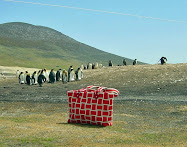
Images de Deauville c. 1936
"What makes a still life good instead of mediocre is the quality of vision and imagination employed by the photographer, and especially his reaction to his subject material"
Not only did American photographer Paul Outerbridge (1896-1958) have the vision and creativity of an artist, he was technically meticulous and imaginative.
 Party Mask with Shells 1936
Party Mask with Shells 1936Outerbridge was at the height of his powers in the period between the two world wars and embraced the project of modernism with extraordinary diligence and elan. He had many friends in the avant-garde, including Marcel Duchamp, Man Ray, Pablo Picasso, Francis Picabia, Constantin Brancusi, Alexander Archipenko and Max Ernst and their influence is felt in his intense black and white images of everyday objects. They all have a sense of abstract and geometric design, a formal beauty and, frequently, a surreal quality.
 Ide Collar 1922
Ide Collar 1922The Ide Collar is perhaps the most iconic of his work. A brilliantly conceived advertisement, Marcel Duchamp tore it from the November 1922 issue of Vanity Fair and tacked it to his studio wall. To Duchamp it was a 'Ready Made' in his own tradition.
I am focusing on his colour photography because it has an exceptional quality of its own.
 Chair with materials 1936
Chair with materials 1936Not only did Outerbridge have state-of-the-art lighting equipment and legendary preparation for every shoot, he developed a method of printing that was terrifically complex and labour intensive. The tri-colour Carbro process used three separate glass plates for each image and involved precise timings and conditions. He wrote about it in a collection of essays entitled Photographing in Color [New York: Random House, 1940] and it wouldn't be for the faint-hearted.
 Wallpaper Design 1936
Wallpaper Design 1936 Beach Equipment c 1936
Beach Equipment c 1936It would be hard for digital photography, I imagine, to achieve this translucence.
 Window with Plants c 1937
Window with Plants c 1937I cannot do justice here to Outerbridge's intellectual and creative instincts or put him more squarely in the context of his time. For a superb essay and many more stunning photographs I recommend the book that I have referred to. It is Paul Outerbridge by Elaine Dines-Cox with Carol McCusker pub. Taschen 1999 My copy has on the cover what I can only describe as an artistically soft-porn nude although he would have objected to that description.
I haven't mentioned his nudes. Blatantly erotic in soft lighting. Of their time?
 Terrace c 1938
Terrace c 1938 Father and Son in Kitchen 1941
Father and Son in Kitchen 1941



































Back with a bang! what a wonderful post Rose- I am not familiar with Outerbridge's work- Thank you so much for introducing him. OK, the beach scene with the umbrella is perfectly of the moment. I haven't seen anything better in any mags all summer. The first photo is another perfect image.Just pluck out the plants from the fabric and wallpaper and perfection too. Don't tell me you are going to have to have an invitation only blog to show the soft porn pics. I'm waiting.
ReplyDeleteLove this post. I agree that still life is extremely difficult, from set up to lighting it's a whole art in itself - I have tried a couple of times but generally failed. It takes a special kind of person to be a still-life photographer. I am half tempted to read his essay on colour - I would love to know how they produce images like this.
ReplyDeleteThanks for the wonderful insight!
Px
Wonderful post.
ReplyDeleteEach image is, indeed, translucent.
That collar!
I love the art of Francis Picabia. That's why I just published a gallery of his work on my site along with a fun puzzle of his self portrait. If you have a sec, pass by my blog and tell my what you think. Thanks! :)
ReplyDeletela, thank you. Jury's out on publishing the nudes!
ReplyDeleteOlivia, you'd better borrow the book! I think you should do more still life.
studioJudith, thank you so much for visiting and tagging me on you fab blog.
Zacarias - I have visited your galleries. A marvellous resource, thank you.
Thank you for this - I'd never heard of him and I am glad I now have. Wonderfully subversive in a couple of instances.
ReplyDelete